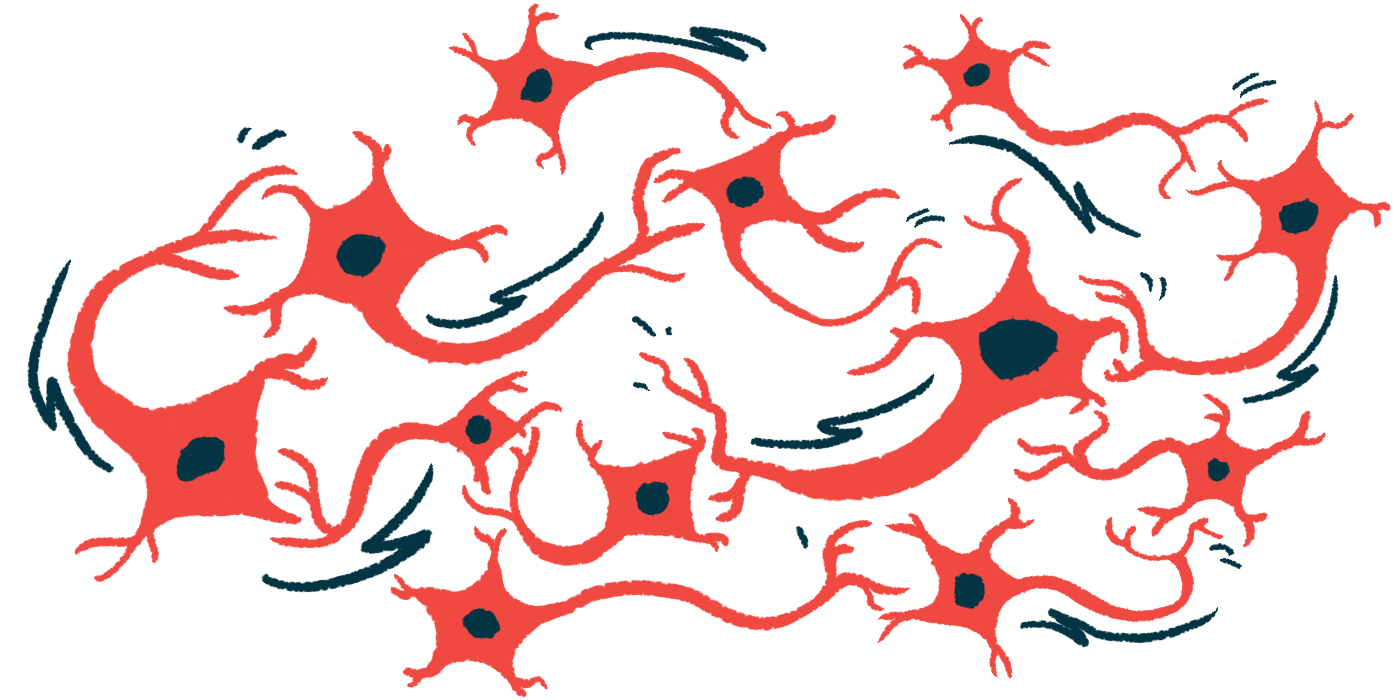Edaravone is more than antioxidant in ALS treatment, early study shows
May exert neuroprotective effects by mitigating TDP-43 mislocalization

Edaravone, an approved amyotrophic lateral sclerosis (ALS) therapy sold as Radicava and Radicava ORS, may exert neuroprotective effects by correcting a key molecular feature of ALS, a cell-based study shows.
Specifically, edaravone was found to correct the abnormal localization of TDP-43, a protein that is involved in many cellular functions but often gets mislocalized within cells in ALS and forms into toxic clumps that contribute to neurodegeneration in nearly all patients.
The findings shed more light on the mechanism of action of edaravone, which was thought to protect nerve cells from damage and degeneration mainly by exerting antioxidant effects.
“These findings help build upon our understanding of edaravone’s potential effects in ALS,” Gustavo A. Suarez Zambrano, MD, vice president of medical affairs at Mitsubishi Tanabe Pharma America (MTPA), which markets the therapy in the U.S., said in a company press release. “By modulating TDP-43 pathology and engaging molecular pathways linked to neurodegeneration, edaravone may play a broader role in ALS management than previously understood and should continue to be studied.”
The study, “Edaravone mitigates TDP-43 mislocalization in human amyotrophic lateral sclerosis neurons with potential implication of the SIRT1-XBP1 pathway,” was published in Free Radical Biology and Medicine.
Radicava and Radicava ORS approved in US to slow functional decline in ALS
Radicava and Radicava ORS are approved in the U.S. to slow functional decline in people with ALS, a disorder caused by the loss of motor neurons, or the nerve cells that control voluntary movements. Their active ingredient, edaravone, is a free-radical scavenger that helps dampen oxidative stress, which is thought to contribute to motor neuron death.
Oxidative stress reflects an imbalance between the reactive oxygen species generated during normal metabolism and the body’s ability to detoxify them.
Still, edaravone’s precise mechanism of action remains unknown, particularly in relation to TDP-43.
TDP-43 is typically found in the cell’s nucleus, where it mainly functions to control gene activity. In ALS, however, TDP-43 is mislocalized in the cytoplasm, which is the liquid that fills cells outside the nucleus, where it undergoes certain modifications that make it prone to form toxic clumps.
Because other antioxidant agents have failed to achieve similar outcomes in ALS clinical trials, edaravone’s benefits may extend beyond free-radical scavenging, according to the researchers.
To find out, scientists at MTPA examined the effects of edaravone on motor neurons derived from an ALS patient carrying a TDP-43 mutation.
Treating cells with edaravone reduced neurotoxicity
Treating cells with edaravone significantly reduced neurotoxicity, as indicated by fewer dead cells than untreated cells or those treated with vitamin C, a potent antioxidant. The therapy also prevented the degeneration of neurites, or the hair-like projections that extend from the nerve cell body, whereas vitamin C did not.
As expected, TDP-43 was mainly localized in the cytoplasm in ALS-derived motor neurons. However, treatment with edaravone significantly reduced TDP-43 levels in the cytoplasm, with effects starting from the lowest concentration tested. In comparison, vitamin C increased TDP-43 levels in both the nucleus and cytoplasm.
Further experiments showed edaravone altered the activity of more than 1,000 genes as early as six hours after treatment, a response not seen with vitamin C.
Looking more closely, the researchers found the therapy appeared to boost pathways that could rescue TDP-43 mislocalization. In particular, edaravone was found to modulate XBP1, a key regulator protein of a stress-related pathway in the endoplasmic reticulum, which is a cellular compartment involved in protein folding and modification.
In fact, previous gene activity data showed increased XBP1 expression in the motor neurons of people living with ALS. Here, high XBP1 levels correlated with neuronal death and neurite degeneration.
“These findings suggest that edaravone suppresses XBP1 activity contributing to the decrease of accumulation of TDP-43 by enhancing protein degradation pathways,” wrote the researchers, who concluded that their study “demonstrates that edaravone, an approved drug for ALS, effectively corrected the aberrant localization of TDP-43, a key pathological feature of ALS.”
Satsuki Mikuriya, a research scientist at MTPA and the study’s lead author, added: “This study provides preclinical evidence that edaravone’s [mechanism of action] in ALS extends beyond its known antioxidant properties.”








